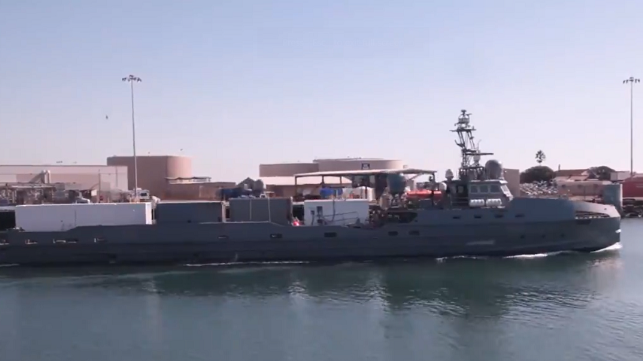Pentagon Tests Anti-Ship Missile Launcher on an Unmanned Vessel

The U.S. Department of Defense has recently tested the launch of an SM-6 anti-air/anti-ship missile from a drone-ship platform, the Pentagon announced in a video release last week.
The video depicts one of the DoD Strategic Capabilities Office's "Ghost Fleet Overlord" autonomous vessel test platforms carrying a containerized launcher on its back deck. While under way, the launcher elevates and sends one missile skyward.
See the game-changing, cross-domain, cross-service concepts the Strategic Capabilities Office and @USNavy are rapidly developing: an SM-6 launched from a modular launcher off of USV Ranger. Such innovation drives the future of joint capabilities. #DoDInnovates pic.twitter.com/yCG57lFcNW
— Department of Defense ???????? (@DeptofDefense) September 3, 2021
The Drive has identified the vessel as the Ranger, one of two commercial fast-supply boats that DoD obtained from an offshore operator in the Gulf of Mexico and converted into autonomous-system testbed platforms. To date, the program's publicly-announced trials have focused on successful autonomous navigation and on the sustainment of unmanned operations on long voyages - a key challenge for conventional propulsion and engineering systems, which rely on regular care from the crew.
Last year, a Ghost Fleet boat transited all the way from Mobile, Alabama to Port Hueneme, California using autonomous navigation for 97 percent of the voyage. The vessel sustained “a couple of small casualties” during the 4,700 mile trip, Chief of Naval Operations Adm. Mike Gilday told USNI, but he said that the service is using that experience to improve its large-USV program.
The installation of an SM-6 launcher on a USV aligns well with the Navy's objective to develop distributed lethality - that is, to put its weaponry on a much larger number of platforms. Historically, the service has relied on high-spec, high-cost destroyers and cruisers to carry the bulk of its anti-surface warfare capability to the fight. With the advent of hypersonic cruise missiles, anti-ship ballistic missiles, advanced mine warfare and satellite sensing, large manned vessels are getting harder to hide and defend. They are also costly to operate when compared with small, unmanned platforms. A fleet of inexpensive, unmanned, autonomous, missile-carrying boats could augment the fleet's capacity, resolving the long-term budget constraints that hamper its shipbuilding ambitions.
